
The Legion of Super-Heroes is a fictional superhero team appearing in American comic books published by DC Comics. Created by writer Otto Binder and artist Al Plastino, the Legion is a group of superpowered beings living in the 30th and 31st centuries of the DC Comics Universe, and first appeared in Adventure Comics #247.
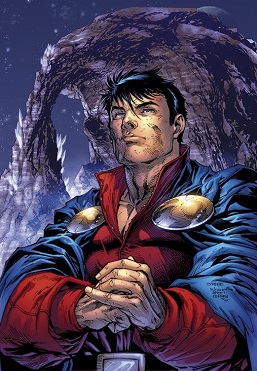
Lar Gand, known mainly as Mon-El, is a superhero appearing in American comic books published by DC Comics, commonly in association with the Legion of Super-Heroes, Superboy, and Superman. The character has been reinterpreted over the years, but in all versions serves as a hero with abilities similar to those of Superman, sometimes serving as a substitute for him.
The Legion of Super-Villains is a team of supervillains who appear in comic books published by DC Comics, primarily as enemies of the Legion of Super-Heroes. They first appeared in Superman #147.
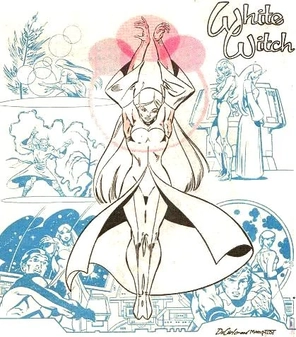
White Witch is a fictional character appearing in media published by DC Comics. Created by E. Nelson Bridwell and Curt Swan, she is usually depicted as a member of the Legion of Super-Heroes in the 30th and 31st centuries. She is the sister of fellow Legionnaire Dream Girl and daughter of Kiwa Nal, the former High Seer of Naltor. Like Dream Girl, she is a native of the planet Naltor, where nearly everyone has the power of precognition, but unlike most Naltorians, Mysa cannot foresee the future.
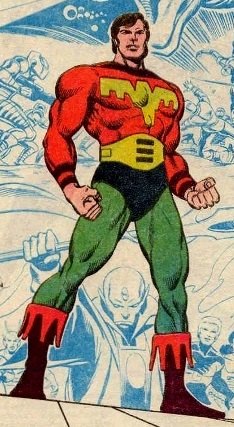
Ultra Boy is a superhero appearing in DC Comics, primarily as a member of the Legion of Super-Heroes in the 30th and 31st centuries. He gained his powers after being eaten by a whale-like beast in space and being exposed to large amounts of radiation while inside. His real name is derived from the Biblical figure Jonah, who also survived being swallowed by a "large fish".
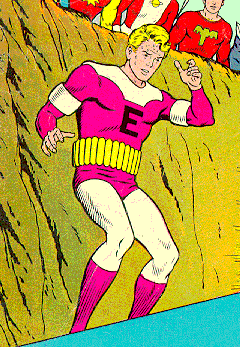
Element Lad is a character appearing in media published by DC Comics, primarily as a member of the Legion of Super-Heroes in the 30th and 31st centuries. A native of the planet Trom, he has the power to transmute chemical elements.
Chemical King is the name of two characters in the DC Comics universe. The first was Mr. Lambert, who was murdered under the direction of Alfred Stryker in "The Case of the Chemical Syndicate", the feature story of Detective Comics #27. The second character named Chemical King is a member of the Legion of Super-Heroes in the 30th century.

Dawnstar is a superheroine appearing in comic books published by DC Comics, primarily as a member of the Legion of Super-Heroes in the 30th and 31st centuries. She was created by Paul Levitz and Mike Grell, and first appeared in Superboy and the Legion of Super-Heroes #226.
Kinetix is a superheroine appearing in the DC Comics universe, primarily as a member of the Legion of Super-Heroes in the 30th and 31st centuries. She first appeared in Legion of Super-Heroes #66, in March 1995.

Laurel Gand is a superheroine appearing in DC Comics, primarily as a member of the Legion of Super-Heroes in the 30th and 31st centuries under the name Andromeda. She was created as a replacement for Supergirl in post-Crisis on Infinite Earths Legion continuity. She was also inspired by elements of Superman's supposed descendant Laurel Kent.

Mordru, also known as Mordru the Merciless, is a supervillain featured in American comic books published by DC Comics. Created by writer Jim Shooter and artist Curt Swan, Mordru made his first appearance in Adventure Comics #369 in June 1968.
Wildfire is a superhero appearing in DC Comics, primarily as a member of the Legion of Super-Heroes in the 30th and 31st centuries. Created by Cary Bates and Dave Cockrum, the character debuted in Superboy #195.
Daxam is a fictional planet within the DC Universe. It is home to a race called the Daxamites, who are descended from Kryptonian colonists.

The Fatal Five is a supervillain team of the 30th century in the DC Comics universe. They were created by Jim Shooter and first appeared in Adventure Comics #352 (1967) as enemies of the Legion of Super-Heroes.
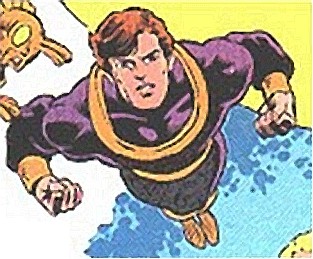
Dev-Em is a fictional character who appears in DC Comics. He first appeared in Adventure Comics #287, created by Jerry Siegel and George Papp. Various versions of the Dev-Em character have appeared over the years in Legion of Super-Heroes related comic books.

"The Great Darkness Saga" is a five-issue American comic book story arc featuring the Legion of Super-Heroes. It was written by Paul Levitz, with art by Keith Giffen and Larry Mahlstedt. Published by DC Comics in 1982, the arc first appears in Legion of Super-Heroes vol. 2, #290–294. It is notable for featuring appearances by virtually every living past and present Legionnaire as of 1982, as well as most of the team's 30th-century allies, including the Legion of Substitute Heroes, the Wanderers, the Heroes of Lallor, and the 20th-century Kryptonian refugee Dev-Em. The heroes battle an immensely powerful being shrouded in darkness, ultimately revealed to be the ancient ruler of Apokolips, Darkseid.
"The Greatest Hero of Them All" is a story arc that was published by DC Comics, and presented in Superman vol. 2, #8, Action Comics #591, and Legion of Super-Heroes vol. 3, #37–38 from August through September 1987. It was written by Paul Levitz and John Byrne, and pencilled by Byrne, Greg LaRocque and Mike DeCarlo. The story arc was DC’s first attempt to correct the inconsistencies in Legion history created when the original Superboy was removed from mainstream DC continuity in the Man of Steel limited series.
"End of an Era" is an American comic book story arc that was published by DC Comics, and presented in Legion of Super-Heroes vol. 4, #60-61, Legionnaires #17-18, and Valor #22-23. It was written by Mark Waid, Tom McCraw and Kurt Busiek, with pencils by Stuart Immonen, Ron Boyd, Chris Gardner and Colleen Doran. A tie-in to the Zero Hour: Crisis in Time miniseries, it is the final story arc in the Legion of Super-Heroes' original timeline, and marks the end of 36 years of unbroken Legion continuity.
"Earthwar" is a story arc that was published by DC Comics, and presented in Superboy and the Legion of Super-Heroes #241-245. It was written by Paul Levitz, pencilled by James Sherman and Joe Staton and inked by Bob McLeod. The story arc features the efforts of the Legion of Super-Heroes to halt a massive intergalactic war involving the United Planets, the Khunds, the Dominators, the Dark Circle and the sorcerer Mordru.
"The Exaggerated Death of Ultra Boy" is a story arc that was published by DC Comics, and presented in Legion of Super-Heroes vol. 2, #273–275 and #277–282. It was written by Gerry Conway, Roy Thomas, and Paul Levitz, with pencils by Jimmy Janes and Steve Ditko. It depicts the long odyssey of Ultra Boy, who is incorrectly presumed to be slain in battle.











